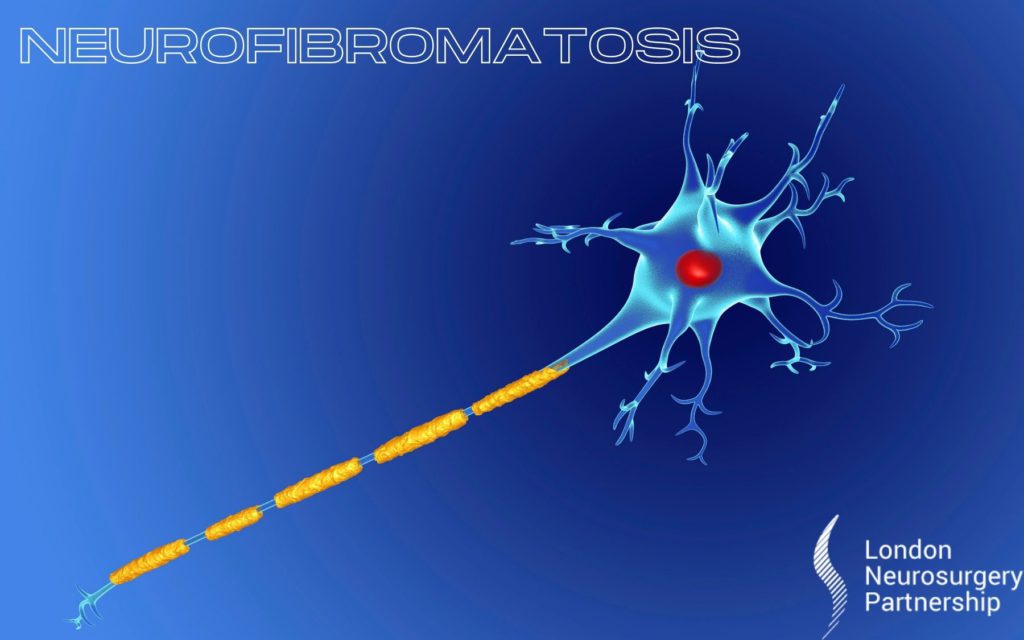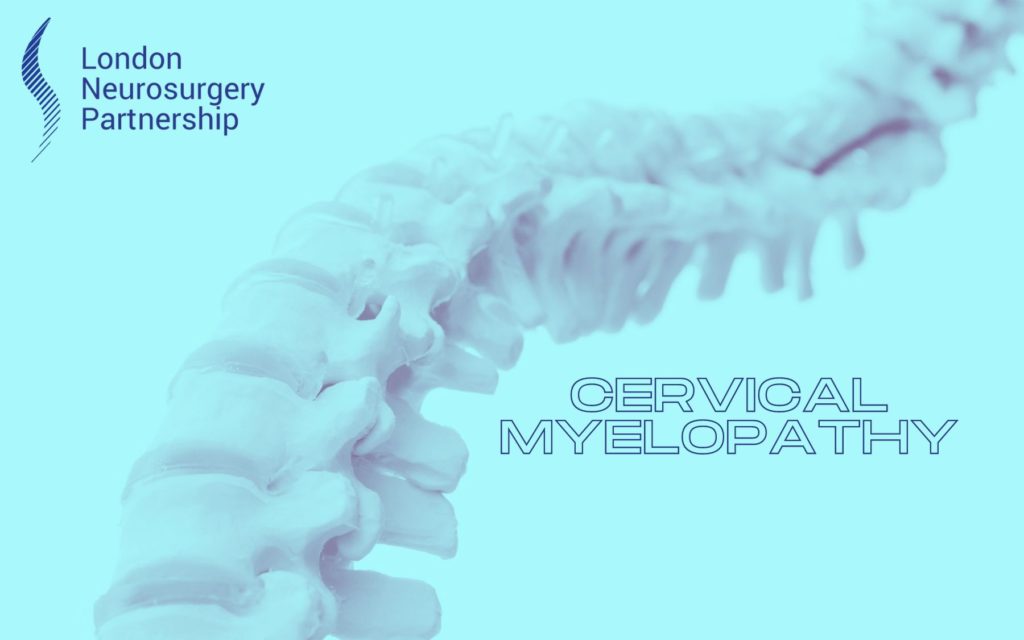
Neurofibromatosis is a genetic disorder whereby tumours form on nerve tissue. Mr Nick Thomas, a world renowned expert, tells us all about neurofibromatosis.The tumours can develop anywhere in the nervous system so on any of the nerves and this includes the brain, spinal cord and nerves. Most patients are diagnosed with neurofibromatosis in childhood or early adulthood.
Thankfully, these tumours are normally benign (non-cancerous) however can on occasion turn malignant (cancerous). Symptoms can be mild to severe and depend upon the location of the tumour.
There are two types of neurofibromatosis – NF1 and NF2.
Neurofibromatosis 1 – NF1:
- NF1 is a genetic condition – you are born with it
- The severity of the condition can vary from one patient to another
- Usually it affects the skin leading to symptoms such as:
- Pale coffee coloured patches
- Soft, benign tumours on or under the skin
- Clusters of freckles but in unusual places e.g. under the armpit or in the groin
Other signs an symptoms which can be associated with NF1 include:
- Bone deformities
- Larger than average head size
- Short stature
- Learning difficulties
- Malignant peripheral nerve sheath tumours (but this is very rare)
- NF1 is caused by a ‘faulty’ gene which leads to uncontrolled growths in the nervous system (these are the tumours). The faulty gene is located on chromosome 17.
- In half of the NF1 cases the faulty gene is passed from one of the parents to the child
- In other cases the faulty gene develops spontaneously with no know cause of this
- It is not always easy to diagnose neurofibromatosis 1 as symptoms can take years to develop
Treatment of neurofibromatosis 1 involves careful monitoring of the patient and treating symptoms a they arise:
- Surgery – can be used to remove tumours
- Medication – to control secondary conditions which can include high blood pressure
- Physiotherapy
- Pain management
- Psychological support
Neurofibromatosis 2 (NF2):
- NF 2 is much more rare than NF 1
- NF 2 is associated with tumours along the nerves linked to hearing and balance which leads to symptoms such as:
- Hearing loss which worsens over time
- Hearing a ringing or buzzing noise
- Balance problems
- Persistent headaches
Tumours can also arise in the brain and spinal cord as well as nerves supplying the arms and legs which can lead to symptoms including:
- Numbness and weakness in the arms or legs
- Pain
- Balance problems
- Vision problems
- NF 2 is also caused by a faulty gene but this time on chromosome 22
The biggest risk factor for developing neurofibromatosis is a family history. About half of the cases are inherited from a parent and this could be from either parent.
This article is intended to inform and give insight but not treat, diagnose or replace the advice of a doctor. Always seek medical advice with any questions regarding a medical condition.
Back to brain conditions.





0 Comments